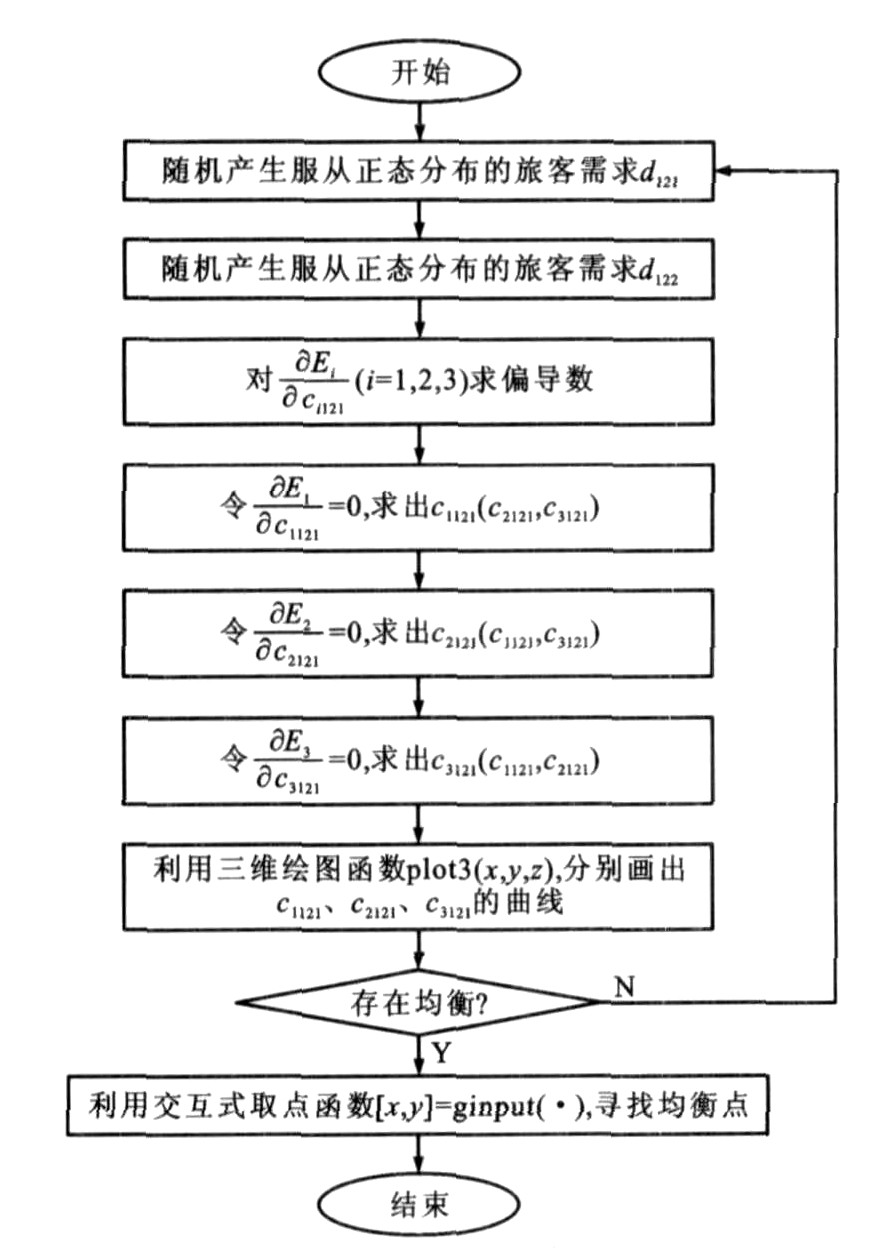Game model of flight seat inventory control in competitive environment
Article Text (Baidu Translation)
-
摘要: 分析了中国航空市场的特点, 以定义不同票价等级下各航空公司所提供的座位数为决策变量, 舱位容量为约束条件, 各家航空公司收益最大化为多目标函数, 构建竞争环境下中国航空公司舱位控制的博弈模型, 利用拉格朗日乘数法求解各航空公司最优低价票数, 并以此来确定均衡舱位。仿真试验表明: 各家航空公司舱位控制策略相互制约且能够达到均衡状态, 但受到旅客需求随机性的影响, 在12 000次的仿真试验中达到均衡的概率为12.68%, 达不到均衡的概率为87.32%, 因此, 这种均衡是动态的且实现机率较低, 结论与实际相符, 模型切实可行。Abstract: Based on the analysis of domestic aviation market, the numbers of each airline's available tickets under different fare classes were regarded as decision variables, the seat capacity was taken as constraint, each airline's revenue maximum was taken as multi-objective function.A civil airline seat inventory control model in competition environment was set up, Lagrange multiplier method was used to solve the numbers of each airline's optimal low fare tickets, and the equilibrium seat was worked out.Simulation result shows that each airline's seat inventory control is restricted by each other and can arrive at equilibrium state.Due to the impact of passenger demand randomness, the model can achieve an equilibrium probability of 12.68% and a non-equilibrium probability of 87.32% in 12 000 simulations.The equilibrium is dynamic and hard to reach.The conclusions are consistent with practice, so the model is feasible.
-
Key words:
- air traffic management /
- airline revenue /
- seat inventory control /
- competition game /
- equilibrium seat
-
表 1 航班参数
Table 1. Airline flight parameters

-
[1] BELOBABA P P. Air travel demand and airline seat inventorymanagement[D]. Cambridge: Massachusetts Institute ofTechnology, 1987. [2] BELOBABA P, WILSONJ L. I mpacts of yield managementin competitive airline markets[J]. Journal of Air Transporta-tion Management, 1997, 3(1): 3-9. doi: 10.1016/S0969-6997(97)82787-1 [3] ZHAO X, ATKI NS D. Strategic revenue management underprice and seat inventory competition[R]. Vancouver: University of British Columbia, 2002. [4] NETESSI NE S, SHUMSKY R A. Revenue managementgames: horizontal and vertical competition[J]. ManagementScience, 2005, 51(5): 813-831. [5] 高强, 朱金福, 蓝伯雄. 国内航空公司实施收益管理的博弈分析[J]. 科研管理, 2006, 27(6): 125-129. https://www.cnki.com.cn/Article/CJFDTOTAL-KYGL200606018.htmGAO Qiang, ZHUJin-fu, LAN Bo-xiong. Research of appli-cation of revenue management in civil airline[J]. ScienceResearch Management, 2006, 27(6): 125-129. (in Chinese) https://www.cnki.com.cn/Article/CJFDTOTAL-KYGL200606018.htm [6] 张周堂. 旅客运输体系的演变分析[J]. 交通运输工程学报, 2004, 4(3): 85-89. http://transport.chd.edu.cn/article/id/200403020ZHANG Zhou-tang. Development of passenger transport sys-tem[J]. Journal of Traffic and Transportation Engineering, 2004, 4(3): 85-89. (in Chinese) http://transport.chd.edu.cn/article/id/200403020 [7] 高强. 航空收益管理若干关键问题的研究[D]. 南京: 南京航空航空大学, 2006.GAO Qiang. Research on some key problems in airline revenuemanagement[D]. Nanjing: Nanjing University of Aeronauticsand Astronautics, 2006. (in Chinese) [8] 彭辉, 陈宽民, 王京伟, 等. 陆桥通道旅客出行选择特征[J]. 交通运输工程学报, 2005, 5(1): 120-123. http://transport.chd.edu.cn/article/id/200501028PENG Hui, CHEN Kuan-min, WANG Jing-wei, et al. Travelchoice characteristics of transportation corridor of Europe-Asia[J]. Journal of Traffic and Transportation Engineering, 2005, 5(1): 120-123. (in Chinese) http://transport.chd.edu.cn/article/id/200501028 [9] 文军. 航空运输安全监管的博弈分析[J]. 中国安全科学学报, 2008, 18(3): 83-87. https://www.cnki.com.cn/Article/CJFDTOTAL-ZAQK200803017.htmWENJun. Game analysis on safety supervision of aviationtransportation[J]. China Safety Science Journal, 2008, 18(3): 83-87. (in Chinese) https://www.cnki.com.cn/Article/CJFDTOTAL-ZAQK200803017.htm [10] 夏少刚, 翟静. 博弈论中的一个优化控制模型[J]. 运筹与管理, 2002, 11(6): 32-35. https://www.cnki.com.cn/Article/CJFDTOTAL-YCGL200206006.htmXI AShao-gang, ZHAI Jing. The opti mized controlling modelof the game theory[J]. Operations Research and Manage-ment Science, 2002, 11(6): 32-35. (in Chinese) https://www.cnki.com.cn/Article/CJFDTOTAL-YCGL200206006.htm [11] CURRY R E. Opti mal airline seat allocation withfare classesnested by origins and destinations[J]. TransportationScience, 1990, 24(3): 193-204. [12] 高强, 朱金福, 陈可嘉. 航空收益管理中多航段舱位控制模型[J]. 交通运输工程学报, 2005, 5(4): 82-85. http://transport.chd.edu.cn/article/id/200504017GAO Qiang, ZHU Jin-fu, CHEN Ke-jia. Multi-leg seatinventory control model for airline revenue management[J]. Journal of Traffic and Transportation Engineering, 2005, 5(4): 82-85. (in Chinese) http://transport.chd.edu.cn/article/id/200504017 [13] 胡异丁, 甘俊英. MATLAB软件在数字图像处理中的应用[J]. 软件导刊, 2008, 7(5): 139-140. https://www.cnki.com.cn/Article/CJFDTOTAL-RJDK200805060.htmHU Yi-ding, GAN Jun-ying. The application of MATLABsoftware in the digital i mage processing[J]. Software Guide, 2008, 7(5): 139-140. (in Chinese) https://www.cnki.com.cn/Article/CJFDTOTAL-RJDK200805060.htm -





 下载:
下载:




